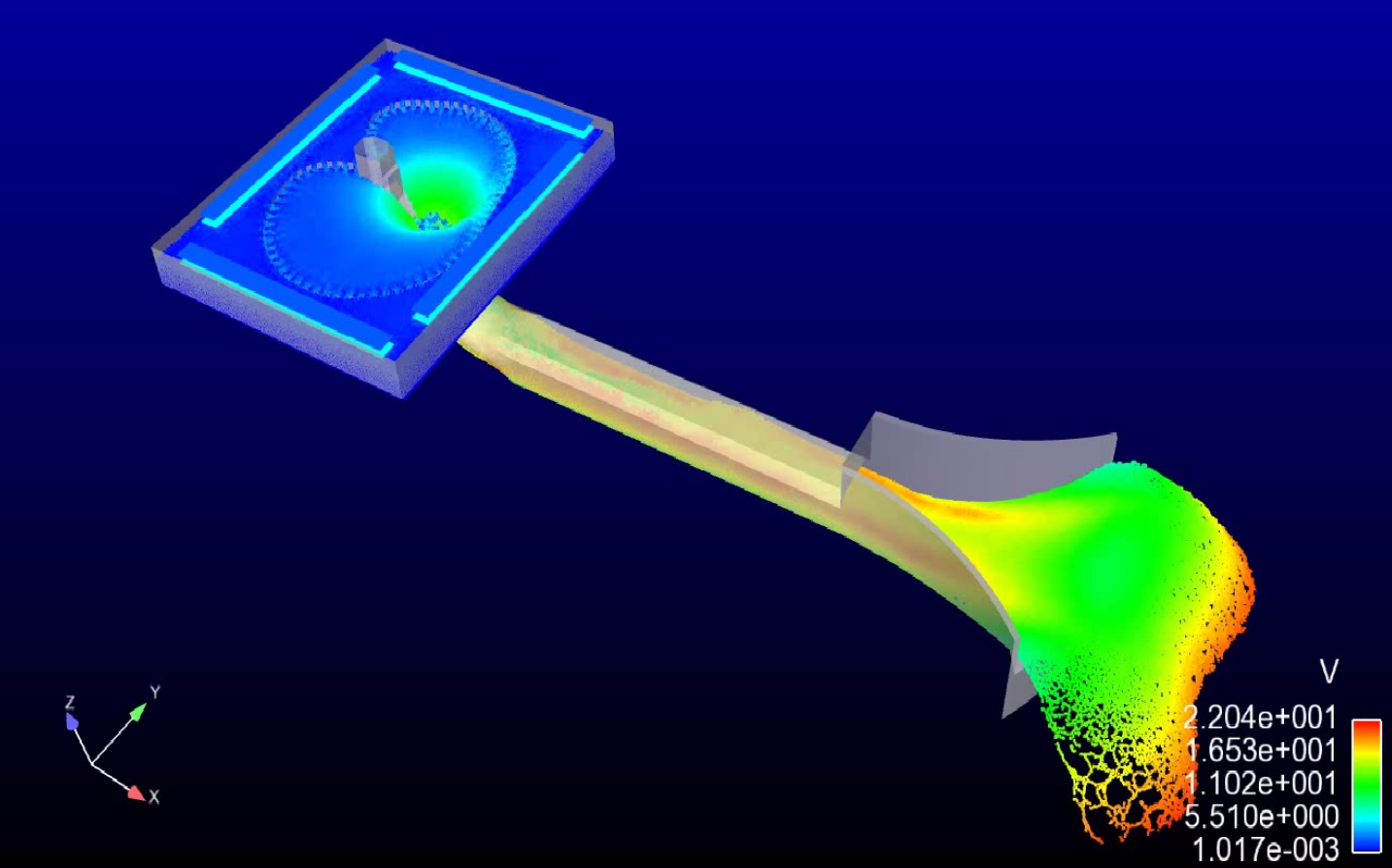Hazards and catastrophe risks by developing tsunami simulations, flooding analysis and hydraulic engineering, these are my fields of expertise. This is based on my strong motivation to solve applied science and engineering problems related to those fields. My 10+ years of experience has led to 11 scientific publications and 144 citations and has allowed me to gain a very broad and global understanding in hydraulics and energy transfers involved in complex hydraulic and hydrologic cases.

From 2007 to 2012 I worked as numerical researcher for the Department of Public Works of Spain, where I collaborated in developing a 3D Smoothed Particle Hydrodynamics (SPH) code, coupled with Graphical Processing Unit (GPU). The goal of this code was to solve three-dimensional complex hydrodynamics processes that occur in spillways and bottom outlets of dams. This code allowed to study their performance and reliability under critical scenarios of extreme high flow discharges. Additionally, I extensively studied flooding analysis combining 2D numerical simulations and experimental data from a hydraulic engineer perspective. During this period I also worked as Assistant Professor at Technical University of Madrid (UPM) where I taught AutoCAD, GIS and other hydraulic and hydrologic software. Thanks to my research I was awarded by the UPM with a Visiting Scholar scholarship to work at Center for Ecohydraulics Research, University of Idaho, from April 2012 to October 2012 where I worked with Dr. Peter Goodwin, President of IAHR. As a result of my research contributions, I earned the first of my PhDs in Hydraulic Engineering from UPM in February 2016 titled: “Application of Smoothed Particle Hydrodynamics to Simulation of Hydraulic Turbulent Flows”. This doctorate was awarded Cum Laude due to its research implications. I strongly encourage to visit my video resume which shows animations of modeled 3D turbulent flows in various hydraulic structures from this research period.

In January 2013, I joined the Department of Geosciences at Virginia Tech where I obtained my second PhD, in Geophysics, in May 2017, titled: “Numerical Perspective on Tsunami Hazards and Their Mitigation by Coastal Vegetation”. This interdisciplinary research focused on analyzing hydrodynamics of tsunami waves, by employing advanced three-dimensional modeling, programming skills and statistical analysis. A pivotal part of my graduate research in coastal resilience strategies involved identification of the most dangerous part of the tsunami waves by studying energy transformation within the flow while wave breaking. The analysis resulted in an accurate determination of their destructive capacity which is critical during breaking and inundation (Marivela et al., 2017). This vital research perfectly complemented my next research which investigated the effect of coastal vegetation in protecting onshore coastal environments from effects of tsunami waves. By integrating laboratory experiments and complex numerical simulations, we obtained cutting-edge results which indicate a viable distribution of coastal trees that, not only reduces wave damages, but also reduces resulting water depth. In this period I was awarded with the Tillman Award for Teaching Excellence in Introductory Laboratories, Department of Geosciences, Virginia Tech, May 2016.
From July 2017 until May 2018 I worked as Research Associate for the Coastal Hazards group at the Department of Geosciences at Virginia Tech, Blacksburg, USA, mentored by Dr. Robert Weiss, where I investigate the efficiency of different onshore coastal vegetation barriers in reducing the tsunamis inundations. This investigation focuses on carrying out multivariable analysis of barrier characteristics by studying flow energy transformations and evolution of momentum. This research is motivated by the fact that understanding coastal vegetation effects on tsunami inundation is imperative in determining safe and evacuation zones onshore.
My background and intense work since 2007 has provided me a large knowledge in hydraulics modeling and data processing make me able and excited of solving complex problems related to coastal hazards, floods and hydraulic engineering. From May 2018 to February 2019 I worked as Assistant Engineer for the Drainage and Flood Control Practice for Dibble Engineering where work developing Area Drainage Master Studies and programming python codes to make project processes more efficient. Currently I work as Software Engineer for the Engineering Application Development and River Mechanics Branch of the Flood Control District of Maricopa County, Arizona, where I am the lead reviewer of DDMSW (Drainage Design Management System for Windows) and additionally I am developing a Finite Volume method aided with GPU and concurrent programming to obtain the coming floods based on a current storm, which involves very fast solving capabilities.
Do not hesitate in contact me in case you consider my gained skills and expertise can be useful for you or your projects.